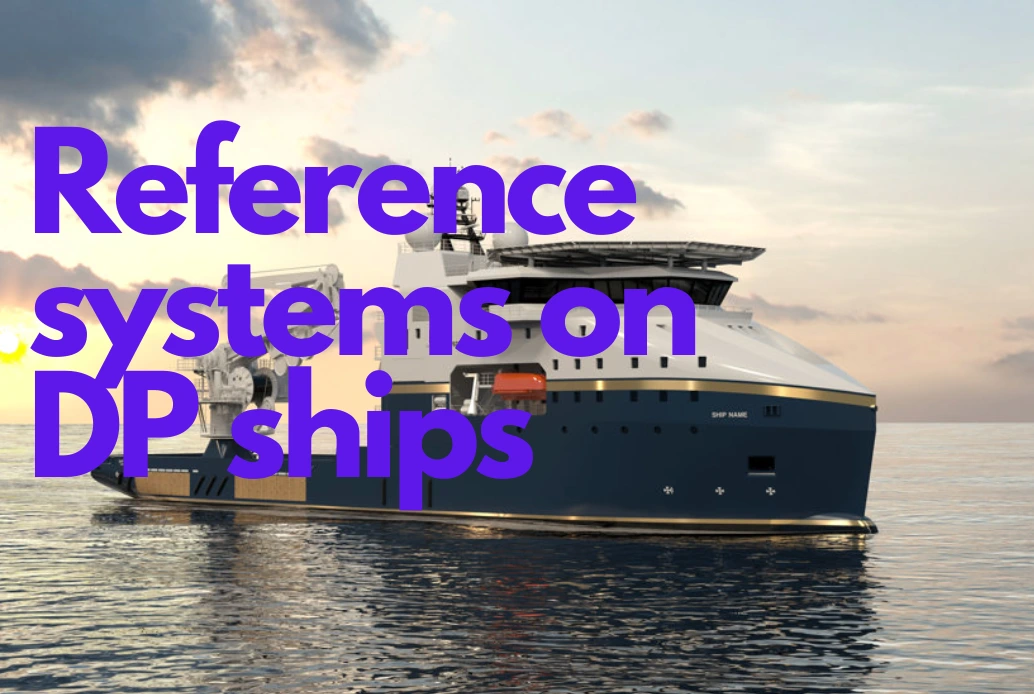Dynamic positioning (DP)
is a crucial technology for offshore vessels, enabling them to maintain precise position and heading even in challenging maritime environments. This remarkable feat is achieved through a complex interplay of thrusters, environmental sensors, and a central nervous system – the DP reference system. In essence, these systems act as the vessel’s eyes, providing accurate and reliable positional data that guides the DP computer to maneuver the vessel with pinpoint accuracy.
Types of DP Reference Systems:
Several types of DP reference systems exist, each with its own strengths and limitations. Here’s a glimpse into the most common ones, including a dedicated section on taut wire technology:
- Global Navigation Satellite Systems (GNSS): Utilizing constellations of satellites orbiting Earth, GNSS like GPS offer excellent coverage and affordability. However, their accuracy can be compromised by signal multipath and atmospheric effects, making them unsuitable for critical operations demanding the highest precision.GNSS Reference System for offshore ships
- Differential Global Positioning Systems (DGPS): DGPS enhances GNSS accuracy by employing a fixed reference station to correct for signal errors. This significantly improves positioning accuracy, making DGPS a viable option for many offshore applications.DGPS Reference System for offshore ships
- Acoustic Local Area Positioning Systems (LBL/USBL): These systems rely on underwater transponders and ship-mounted transducers to measure the vessel’s relative position with high accuracy and independence from external factors. LBL/USBL systems are ideal for close-proximity operations like platform supply or subsea construction.LBL/USBL Reference System for offshore ships
- Fanbeam Systems: Primarily used for short-range, high-precision positioning, fanbeam systems emit acoustic beams that reflect off subsea targets, providing real-time relative positioning data. Their accuracy makes them invaluable for tasks like subsea docking and equipment manipulation.Fanbeam Reference System for offshore ships
- Taut Wire Systems: Offering a unique blend of high accuracy and long-range capabilities, taut wire systems deploy a tensioned wire with a weight anchored to the seabed. Sensors on the vessel measure the angle and length of the wire, allowing precise calculation of the vessel’s position relative to the anchor point. Taut wire systems excel in deep-water operations, pipeline inspection, and subsea structure installation due to their independence from external signals and susceptibility to atmospheric interference. They are robust and reliable, making them a favorite choice for demanding offshore projects.
Kongsberg Reference Systems:
Kongsberg Maritime is a leading manufacturer of DP reference systems, offering a range of solutions for various offshore applications. Here are some of their notable systems:
- HiPAP 500 Series: A versatile acoustic positioning system for demanding offshore operations, offering high accuracy and reliability in diverse environments. Kongsberg HiPAP 500 Series Reference System
- SeaKing USBL: A high-performance USBL system designed for subsea positioning and tracking, ideal for ROV operations and construction projects.
- iXblue Fanbeam: A compact and lightweight fanbeam system for precise close-range positioning, well-suited for tasks like subsea docking and equipment installation.
- Kongsberg Taut Wire Systems: Offering various taut wire configurations for extended range and high accuracy positioning, ideal for deep-water operations and subsea structure monitoring. Kongsberg Taut Wire Reference System
These are just a few examples, and Kongsberg’s portfolio of DP reference systems caters to a wide range of offshore needs. You can find more information about their specific offerings on their website: https://www.kongsberg.com/maritime/products/vessel-reference-systems/
Redundancy and Reliability:
Offshore operations often involve critical tasks where maintaining position is paramount. To ensure maximum reliability, DP systems typically employ multiple reference systems, each operating on different principles. This redundancy minimizes the impact of system failures or environmental limitations, safeguarding the operation’s integrity.
The Future of DP Reference Systems:
Technological advancements are constantly pushing the boundaries of DP capabilities. Integration with LiDAR, inertial measurement units (IMUs), and advanced sensor fusion algorithms is paving the way for even more precise and robust positioning solutions. Additionally, the development of new satellite constellations and communication technologies promises further enhancements in accuracy and operational range.
Check other posts
